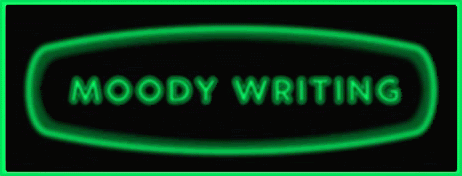You have to know whose story
you’re telling. This is not something you find out. You have to make the
decision and then you have to carry it out.
The key to creating a singular
voice in a scene is to work out what the tone it is you’re going for. Tone is
established through emotion. This can be within the characters, or it can be
within the reader. Or both.
Whatever POV you choose, within a
scene there has to be that one singular voice. You may think in first person this
would be easy, but the danger is you just become the observer. Your character
has to be involved with what's happening, even if it's only internally.
In third person multiple POV you
not only have to make sure you stay in the POV assigned to each scene/chapter,
you also have to make each POV distinct. In real life friends/workers have
similar views and opinions. In fiction that would just be confusing.
Even in omniscient, you need a
singular voice. You can’t just jump from one person to the next. Omniscient is
written from the perspective of a storyteller, a separate character. Even when
you talk about the thoughts of an individual character, you have to do it
through the filter of the narrator.
Switching emotions should be
handled carefully. If a character starts off sad, and through the scene she
cheers up, we should be able to see what provokes that change. Literally. In
real life people might just pull themselves together, in fiction that looks like
cheap and lazy writing.
If a character goes from a crime
scene to a love scene it can be jarring. The scene with the decapitated body
may end Ch.4, and Ch.5 may start three days later in bed with the detective
and her boyfriend, but time does not work for the reader as it does for
the writer. To us, she only stopped throwing up over a corpse one page ago. You have to create
the sense of time passing or events happening.
When other characters are doing
things, arguing or dealing with subplots, you still have to bear in mind whose
story it is. Yes, the other characters could have a whole conversation without
your POV character commenting, but it’s your job to reference it back to the MC.
It’s not just what's happening that matters, it’s how it effects your MC, how
your MC reacts, what your MC thinks about what just happened. If it feels inappropriate
to crowbar your MC in there, change the scene until it feels appropriate.
Emotion and tone need to be
consistent, and when they need to change, they need to transition smoothly. It’s
one of the hardest things to learn because most of the time you do it
instinctively without giving it a second thought. Which is why it’s so easy to
miss when you go back over the story.
And why is it so important to have this singular voice? Because the reader cannot identify with more than one person at at time. You want your reader to be involved in the story? Then they can't see it from everyone's perspective and stay emotionally engaged. Neutral and objective is fine for a court case, for immersing yourself in fiction, not so much.
If you found this post surprisingly coherent for Day 23 of the AtoZ Challenge, please give it a retweet. Cheers.








































































































14 comments:
Brilliantly put. It's so easy to do the jump cuts between scenes, but those transitions are vital. Same deal with the emotions. If you don't transition, your character will come off as bipolar.
That's why I stick to third person through only two characters. Although in my next book, it will be through three characters. Crap I hope I can pull it off.
Thanks for the words of wisdom. Always learn something here.
POV is such a complicated thing. There are certain POVs I won't try because I'm too scared of screwing it up.
@Stina-of course the writer doesn't see it because to them the transition exists in their head.
@Alex-You can do it!
@Fairview-you are more than welcome.
@Lydia-it's the times where I want to switch pov, but only for a couple of sentences, that are the most frustrating.
So, so true! It drives me crazy when authors head-hop, or when they switch chapters and it takes me forever to figure out which character is talking now. I like to do first person from one POV. Much simpler. (Plus much more fun, since I can really get into a character's head.)
Yep, the passage of time is so important to have in a story -- I had quite the giggle when reading the examples you made, especially when she "just threw up over a corpse one page ago." That was classic!
I tell a story from the perspective of two different characters in the short screenplay I'm working on, but those perspectives are not told at the same time. I bounce back and forth in the beginning depending on what's happening in the scene and eventually, the story gets told from one person's perspective after something huge happens.
Since it takes place in real time, I don't need to figure out a way to show time passing but I don't want it to bore viewers so I've been trying to figure out how to speed it up without speeding it up, if that makes any sense. Like, speeding up the scene without speeding up the story, because I want to make it look like a lot of time is passing.
~Nicole
Blog: The Madlab Post
@MadlabPost on Twitter
@Caryn-first person does meake it much easier to figure out.
@Nicole-sounds like an interesting idea. Good luck.
"It’s not just what's happening that matters, it’s how it effects your MC, how your MC reacts, what your MC thinks about what just happened."
It may sound obvious, but I've seen this ignored in so many stories. Thoroughly enjoyed your post. Thanks,
@sherry-welcome.
Fabulous post. This is just as important for flash fiction which has to be punchy in a few words. sometime just changing the order of a sentnce or paragraph can have great impact, so your advice about what scenes should follow others resonates with me, especially.
This post came at a most opportune time for me. I am trying to revise my ms, which does include the POV of five best friends. My edtorial evaluator told me I had too much 'head-hoping'in the story. I've done some additonal research to identify what needs to be done, and I think I've made good progress.It's hard, but it's a blast!
@Madeleine-often it helpos to think of scenes as flash fiction pieces so they get teh proper focus.
@nan-welcome to the wonderful world of POV.
Simply explained! It's easy to get carried away with all the action when you're writing and because you know the outcome then of course you understand what is going on. However, your poor reader will not thank you if it's confusing trying to work out whose viewpoint is being expressed. Thank goodness for beta-readers, who pick up on that before you get too far out of control!
SueH I refuse to go quietly!
Twitter - @Librarymaid